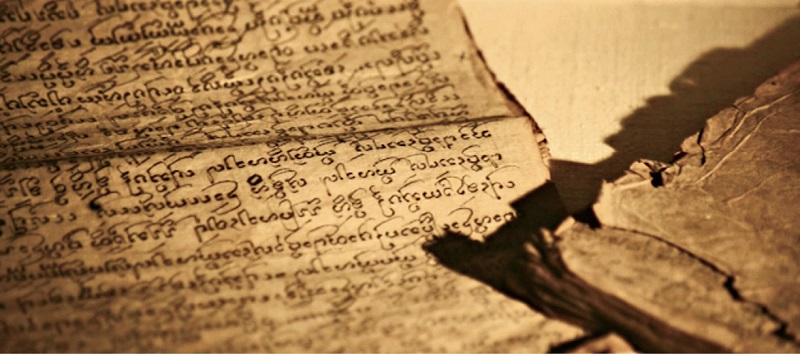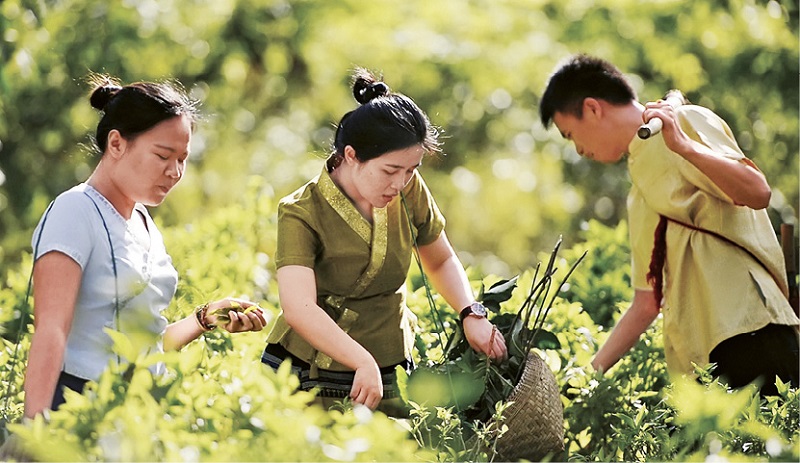Traditional Dai medicine is the wisdom of the ethnic group accrued over thousands of years, and one of the precious cultural heritages of the Chinese nation.

Ancient texts about the four substances and five aggregates in traditional Dai medicine.
Xishuangbanna in southwest China’s Yunnan Province has long been well-known for tourism at home and abroad. Its delicious food and fine views are refreshing for one’s mental health, while medicine from its rainforest can also heal the body.
In a popular Chinese TV drama, the leading actor has his sprained ankle cured in no time by a Dai doctor. The viewers couldn’t help but wonder if Dai medical techniques and practices really have such a miraculous healing effect.
The answer is yes. In addition to tropical rainforests and exotic environments, the most impressive features of Xishuangbanna are Dai medicine and therapies. From intricate medical books to unique therapies, Dai medicine is layered with much mystery.
Various types of flora and fauna in Xishuangbanna’s dense rainforest present a rich and complex symbiotic ecosystem. Correspondingly, rainforest-sourced herbal medicine also embodies this survival wisdom. For example, in Xi-shuangbanna, many medicinal herbs with nodes can be used to treat fractures and bruises. Other herbs that grow on watersides are effective for treating rheumatic numbness and edema. There are also herbs that can be used to stop bleeding, tranquilize and soothe patients or detoxify. A variety of dendrobium species commonly used to decorate Dai people’s courtyards can also be prepared as dishes at meals or eaten as medicine.
Dracaena, the world’s longest-living monocotyledon, in the remote mountains of Xishuangbanna is a miraculous medicinal herb that has been used for hundreds of years. Since it is a protected species in China, researchers have been studying how to use it while preserving the species.
In Dai medicine, there is a visually shocking therapy with good healing efficacy. Patients lie on warm medicinal herbs weighing up to nine kg and allow their body to sweat and detoxify. The variety of ingredients is made possible by the abundance of rainforest species.

Dai doctors accumulating medical knowledge by collecting samples of medicinal plants in the field.
According to the theory of Dai medicine, there are “four substances” that are indispensable for human beings in nature; namely wind, fire, water, and earth. Similar substances also exist in the human body. The dynamics of the four substances explains physiological phenomena and pathological changes of the human body, and offers guidance on diagnoses and treatments.
Dai doctors also believe that human bodies have khandha or five aggregates. They are the visible form of human body, the body’s ability to recognize and understand the environment, human response and tolerance to various stimuli, the ability to think and conduct rational behavior, and internal changes in various physiological functions of the human body.
In fact, the “four substances” and “five aggregates” of traditional Dai medicine come from Buddhist scriptures. With a history going back more than 2,500 years, Sanggelong is one of the few extant scriptures written on pattra leaves. The 234-page Sanggelong teaches monks and ordinary people various medical techniques. Its existence indicates that the Dai people had their own medicine as early as 2,500 years ago.
Dai doctors often advise people to take immunity-boosting herbs, and almost every family has their own special medicinal recipes to treat people with food poisoning or heatstrokes. After the onset of a disease, herbs or herbal concoctions should be taken first to relieve the factors that cause the illness. Those who have been ill for a long time or cannot be cured for a long time should also take them to relieve the toxic side effects caused by lack of treatment, mistreatment, or improper medication before having new medicine.
The medical wisdom of people living in the rainforest has been passed down generation by generation. People in Dai hamlets nowadays still trust Dai doctors, who are particularly good at treating bruises and swelling-related injuries. There are also many people from other places who seek treatment from Dai doctors.
Yunnan has the largest number of ethnic groups in China. During the long course of history, the development of ethnic Chinese medicine and traditional Chinese medicine complemented each other. Traditional Dai medicine reflects the simple philosophy of the Dai people regarding all things on earth, the natural environment, and intelligent life. It is also the accrued wisdom over thousands of years by the ethnic group, and one of the precious cultural heritages of the Chinese nation. 
BAI YAN is director of Yunnan Ethnic Culture Audio & Video Publishing House.